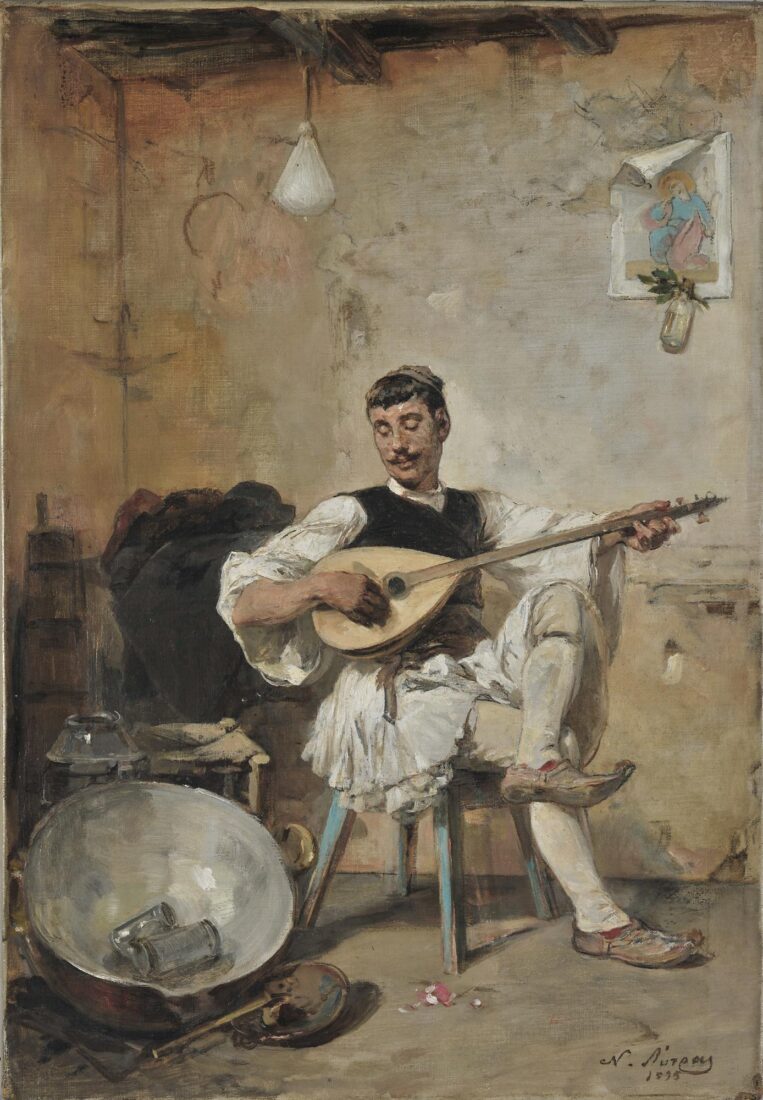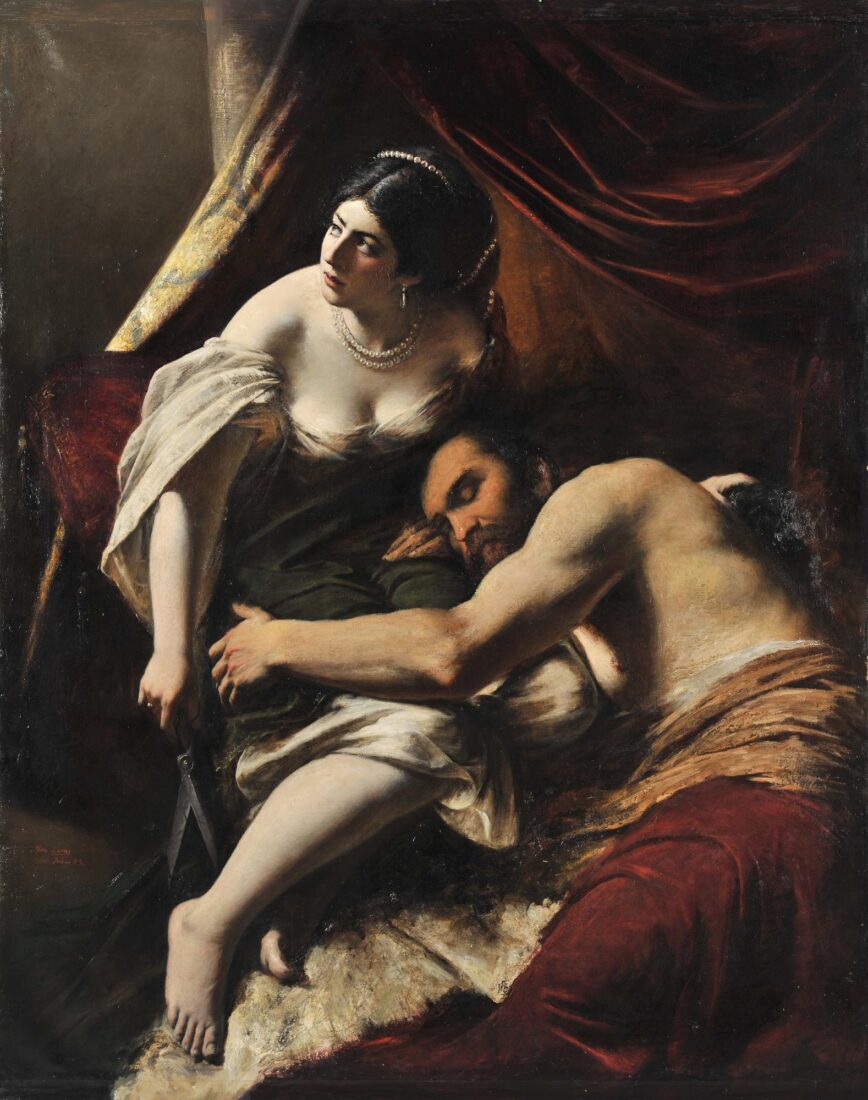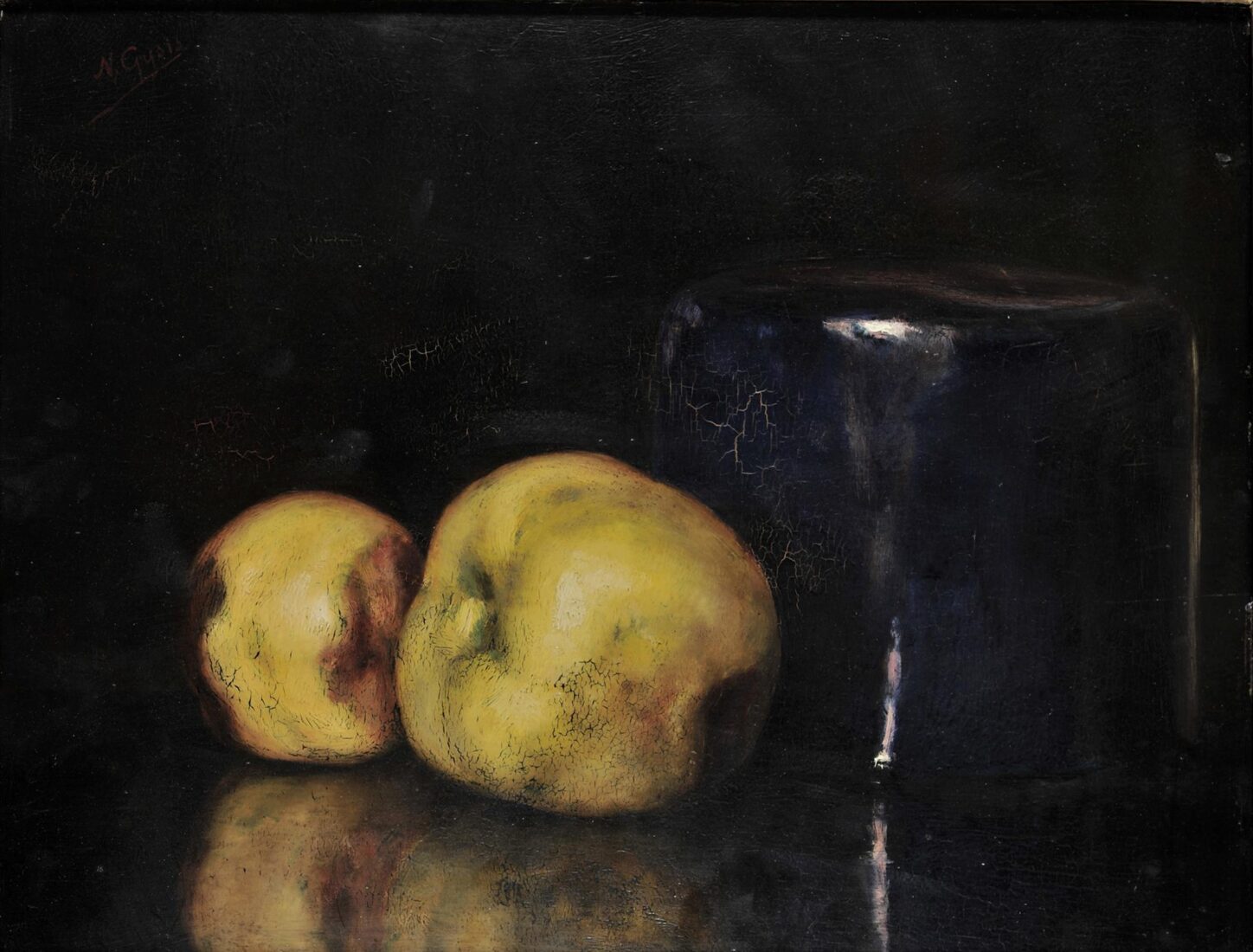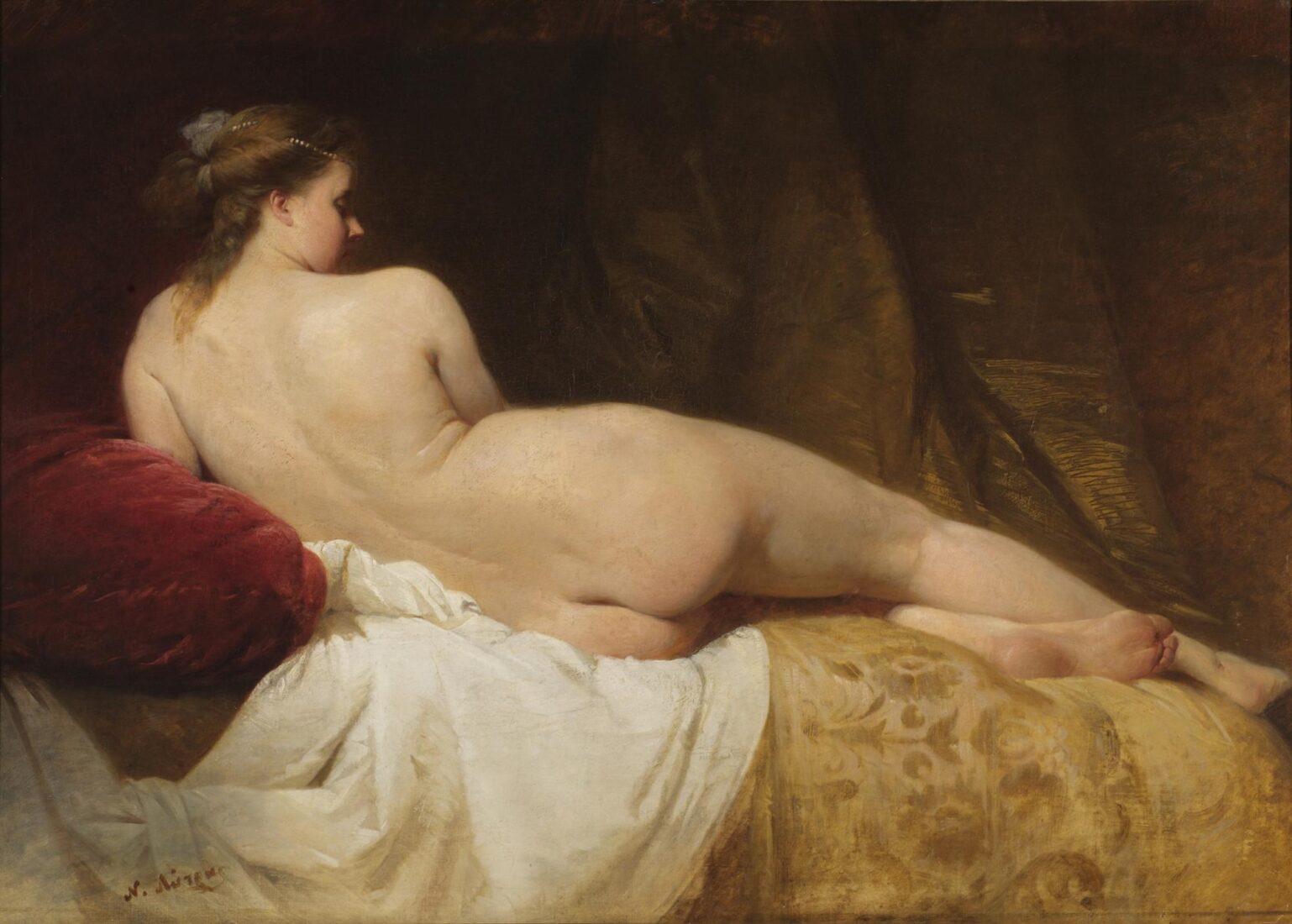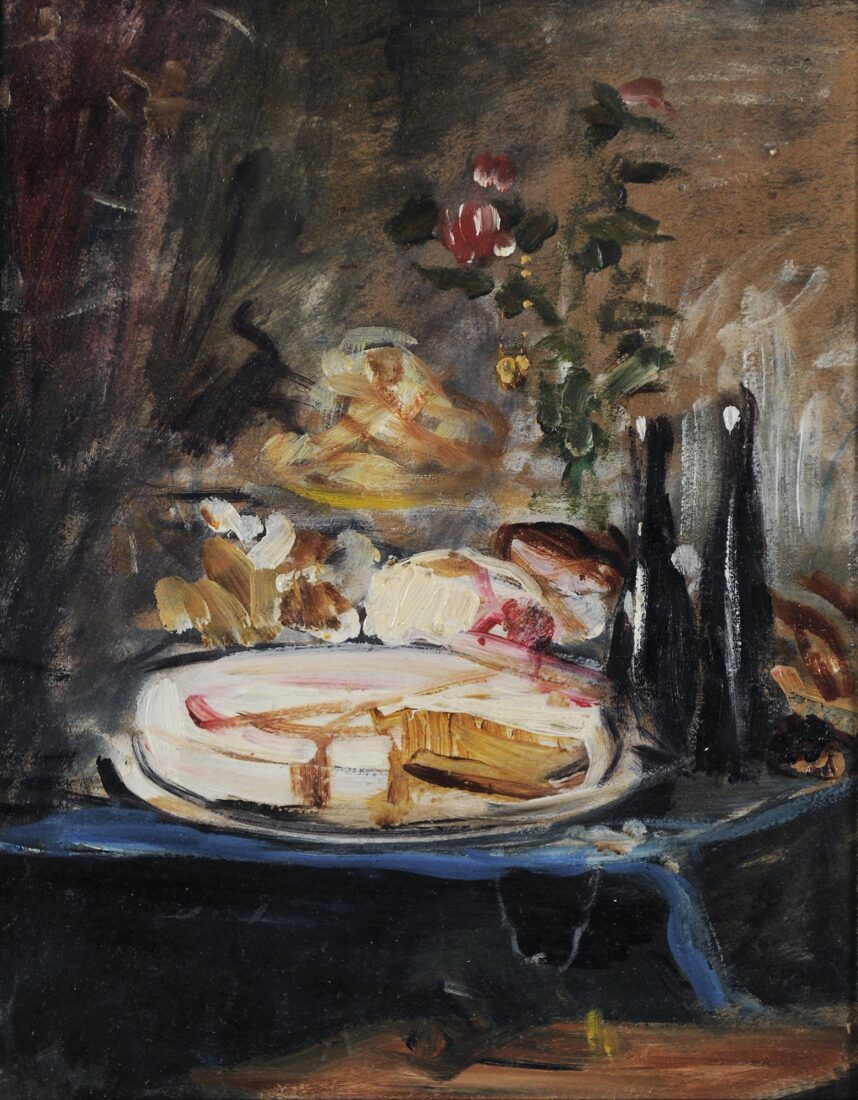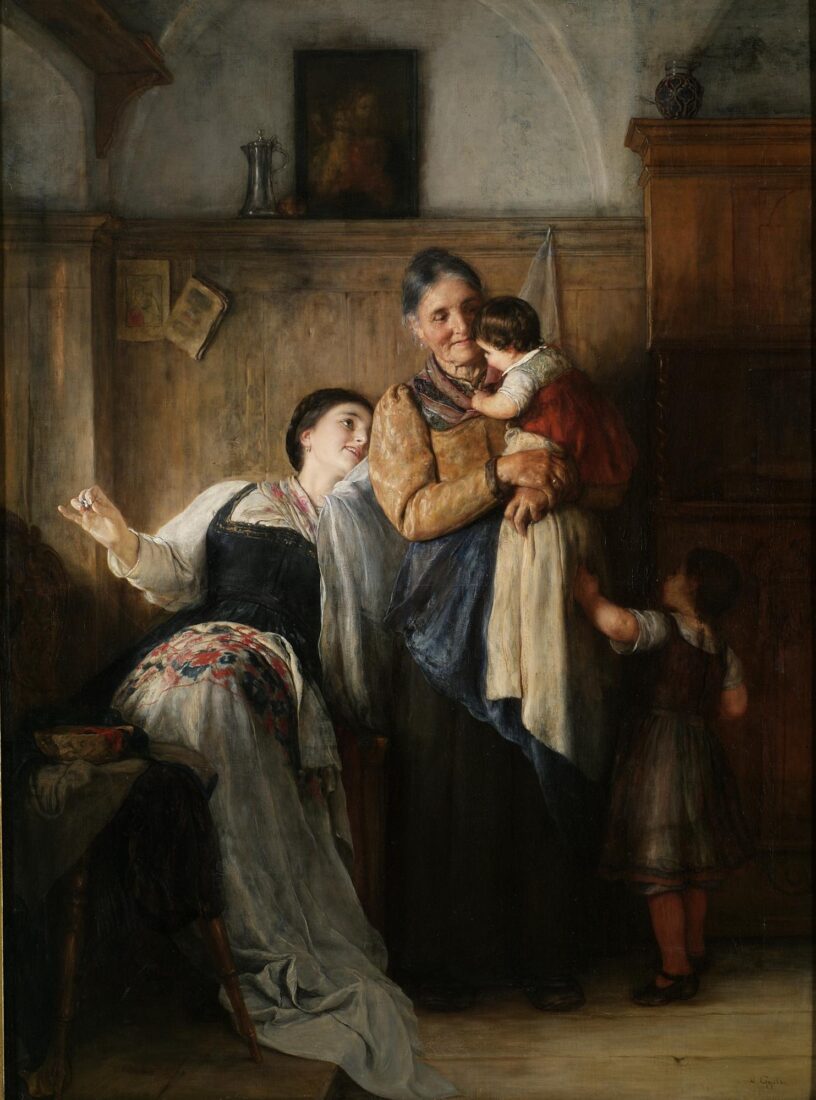

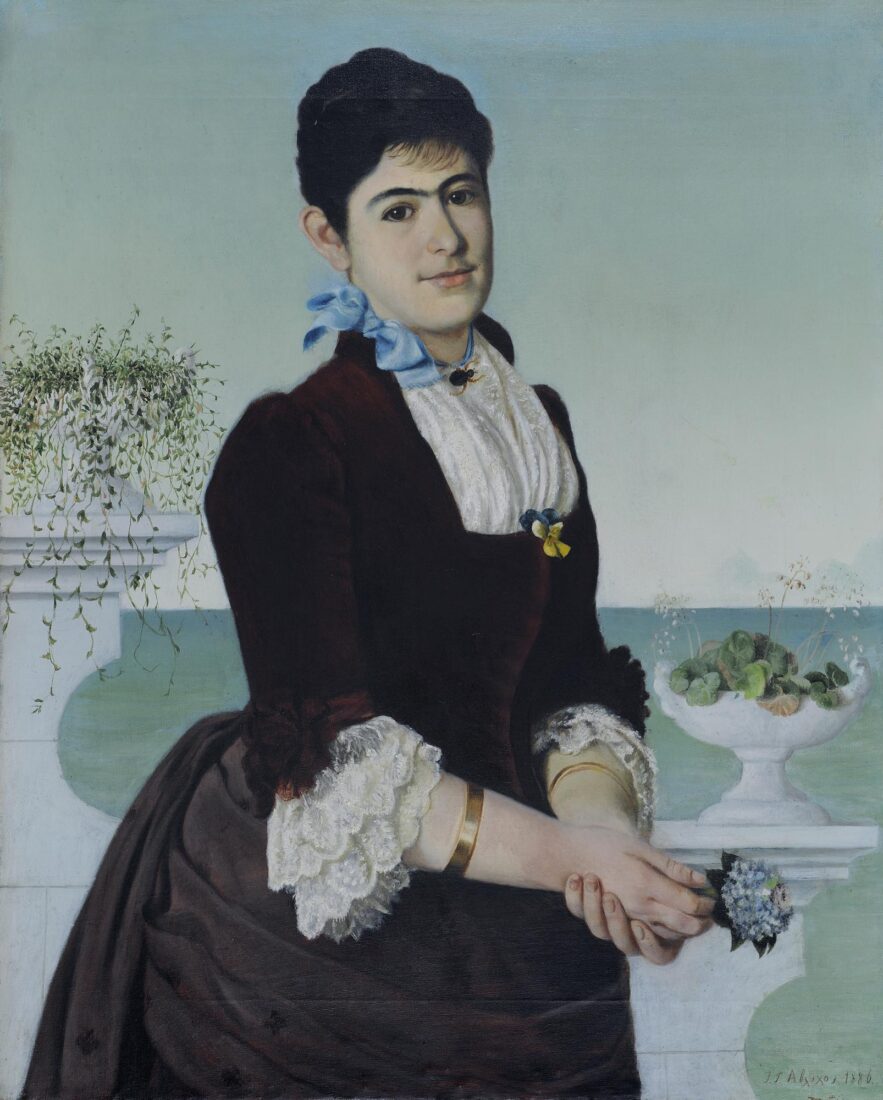
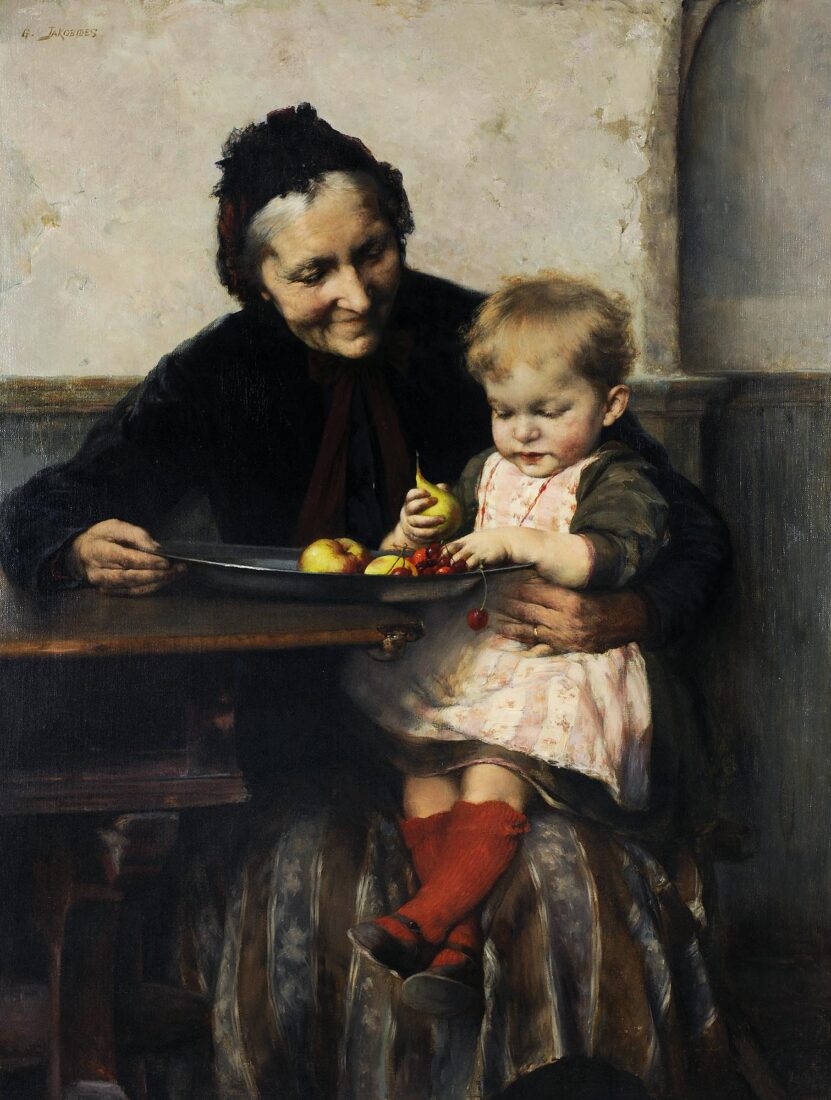
Iakovidis is the last great exponent of the Munich School. Although he distinguished himself in many genres (genre painting, portraiture, still life), he was mainly known and loved by the people as a painter of childhood. Most of his works on this theme were painted in Munich, where he lived from 1877 to 1900, when he was invited to return to Greece and become the director of the National Gallery, which had only recently been established. Iakovidis inimitably captured the relation of the elderly, grandfathers and mothers, with their grandchildren.
This work features a dark-clad goodly grandmother, holding a cute blonde little girl in her lap; the child is wearing a white flowery apron and red socks. The bronze fruit plate has captured her attention — a great opportunity for the artist to create a wonderful still life. The scene unfolds against a white wall, contrasting sharply to the dark-coloured main subject. Everything has been painted with an extraordinary knowledge of drawing, colour, light as well as profound insight into the psychology of the relation between the two ages.
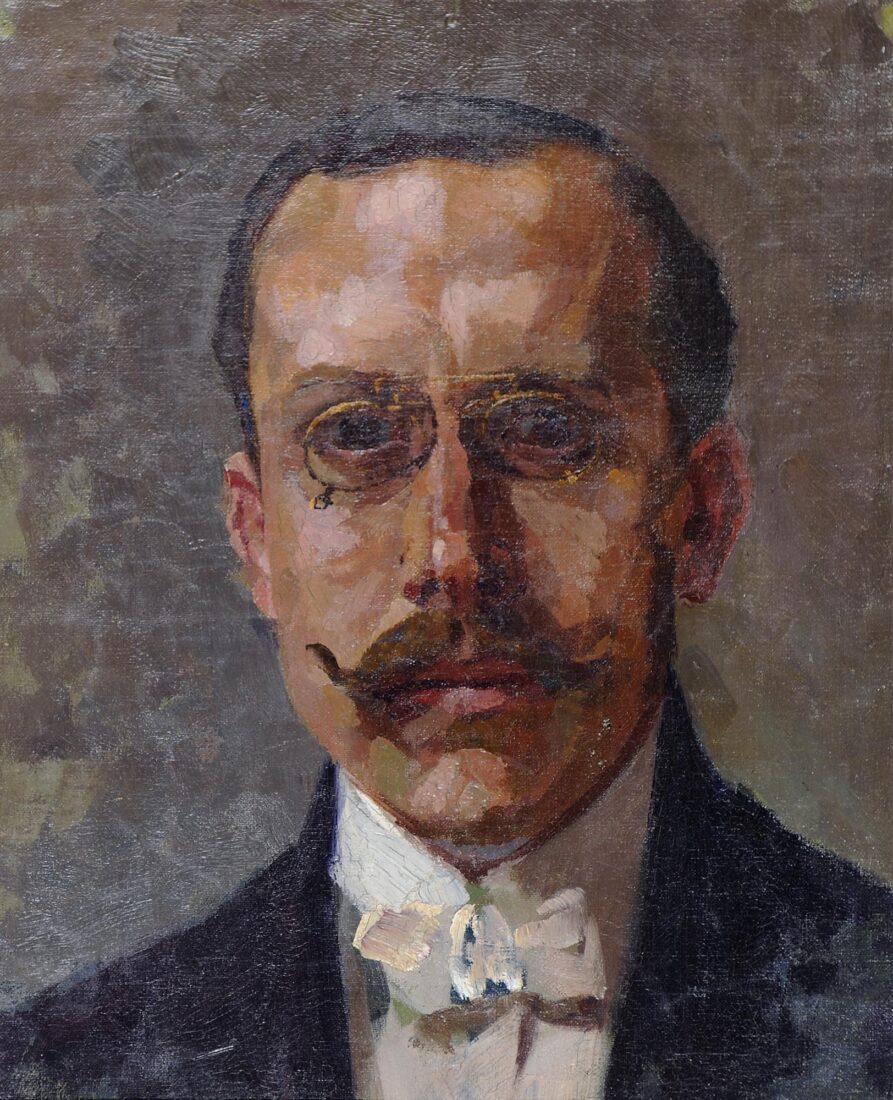
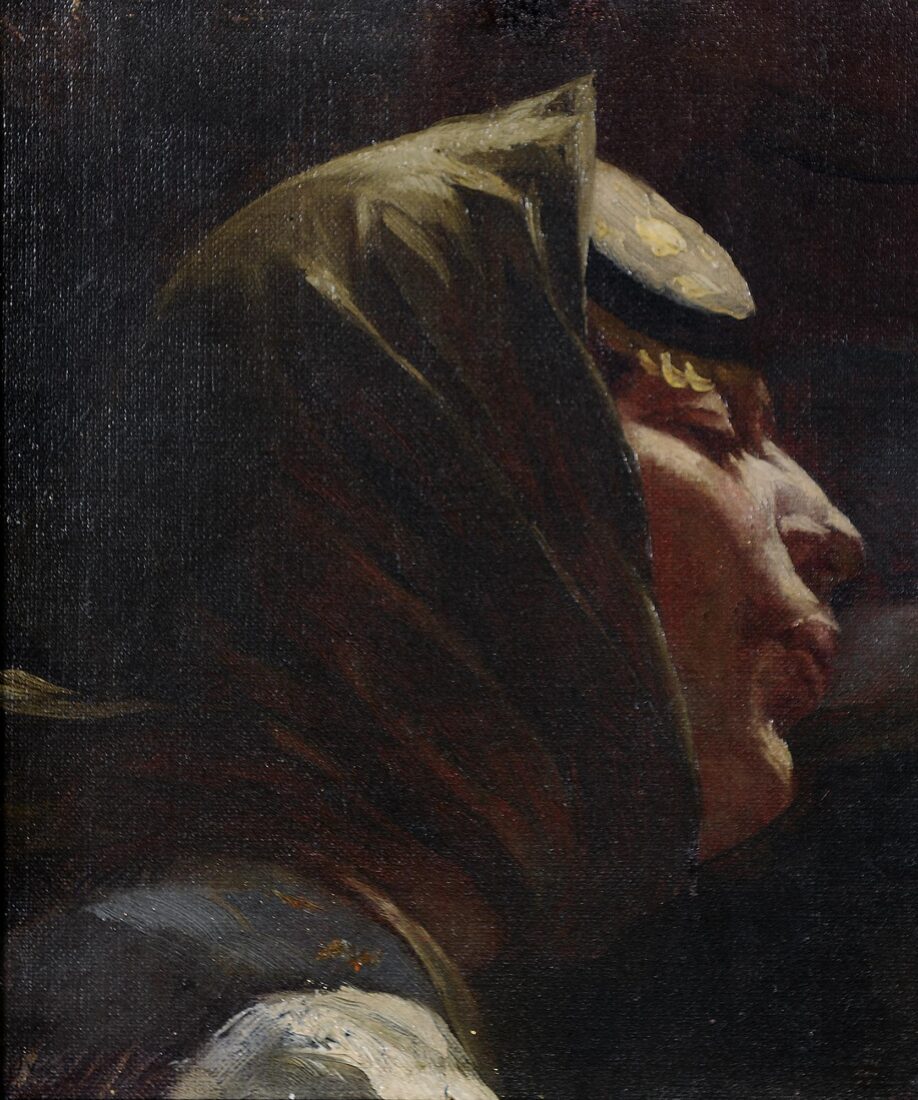
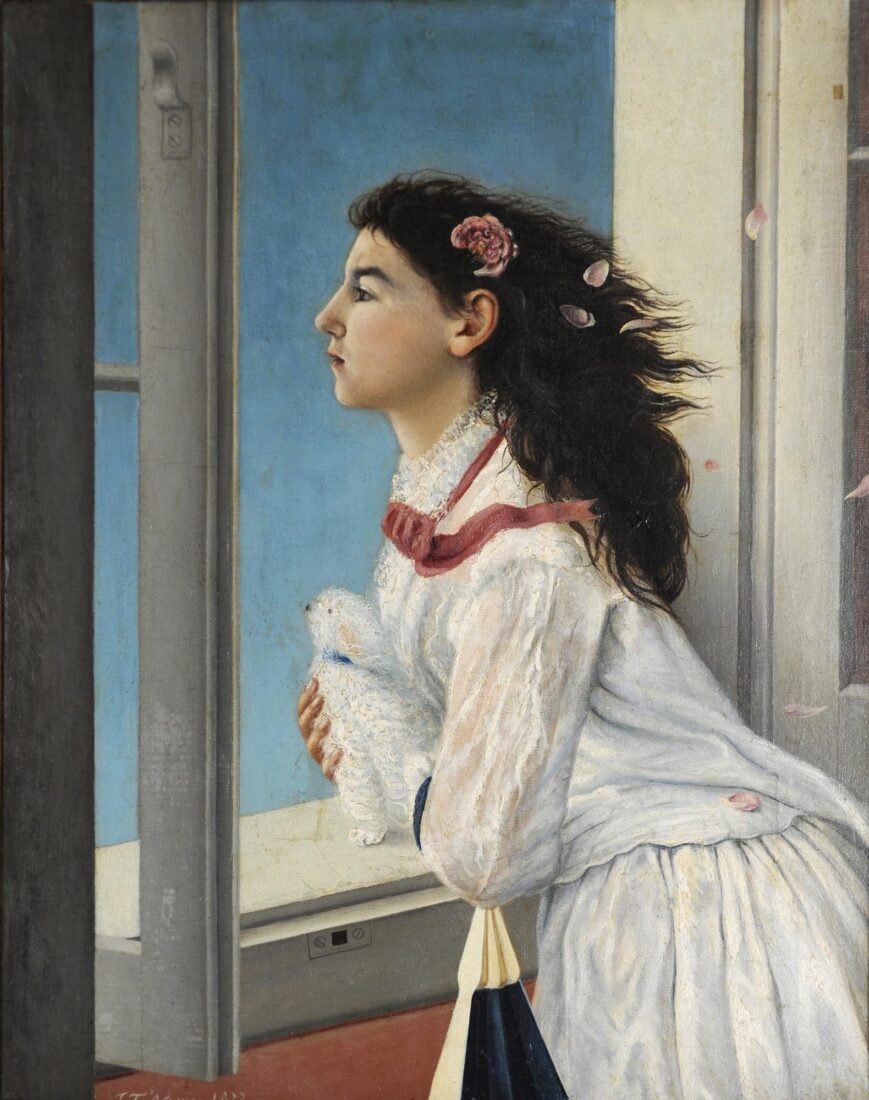
A poet, musician and painter who studied in Italy, Georgios Avlichos, the Cephalonian artist who created this masterpiece, was completely removed from the academic tradition of his times. There is something poetic and eerie about the atmosphere in his works; an almost metaphysical aspect, heralding de Chirico and Balthus, a contemporary painter. Another characteristic quality that set Avlichos apart from other artists of his period is that he steered clear of the brown asphalt employed by academic painters, painting instead in clear and bright colours.
What is it that the young Roubina (for her name is known to us), the daughter of Ioannis Gerasimos Kavalieratos, is gazing at through the open window of her country house at Vlachata, Sami? She is gazing at the blue sky in reverie, and the little white dog she has in her arms seems equally absorbed by the same vision, invisible to us. Her ethereal white dress, painted in light lilac and ochre hues, contrasts with her black fan and loose, crow-black hair. A sea breeze, the scented zephyr of the Ionian Sea, blows on the girl’s hair, scattering the petals of the red rose in it. Can it be that this scattering of the rose petals is a symbolic allusion to the fleeting youth, torn apart like a rose by time?
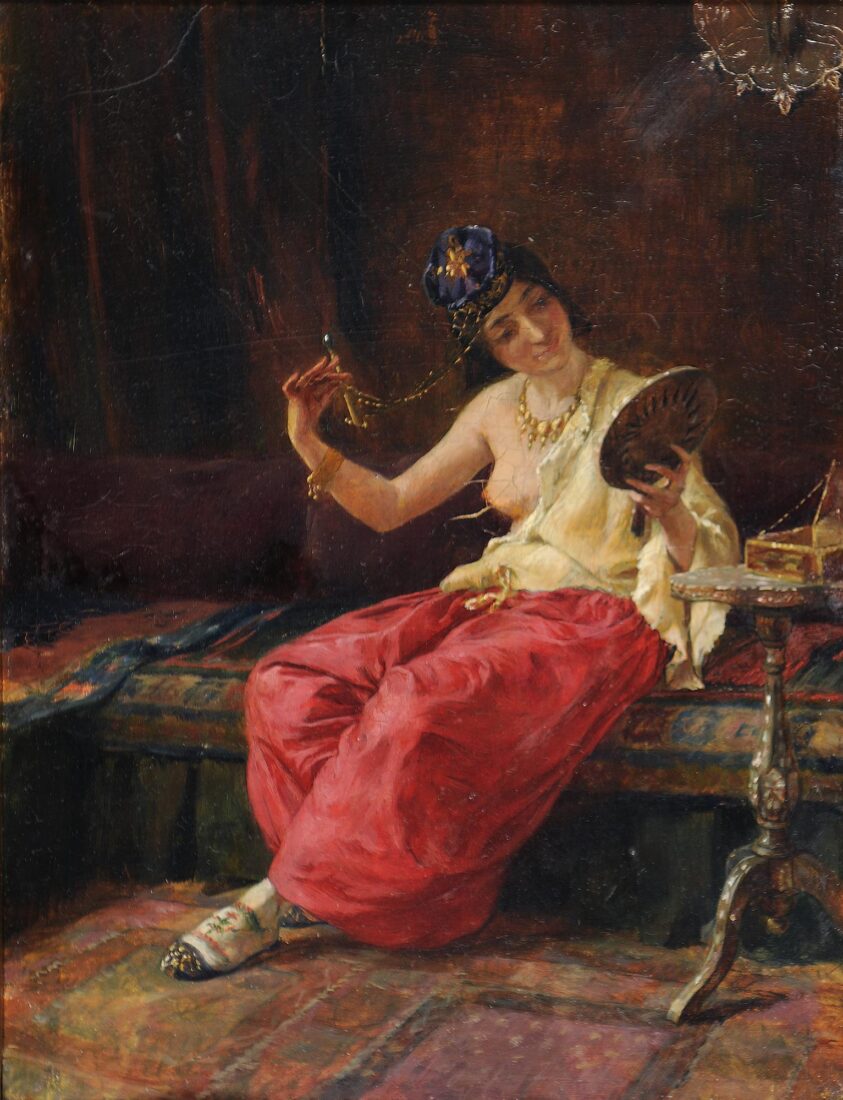
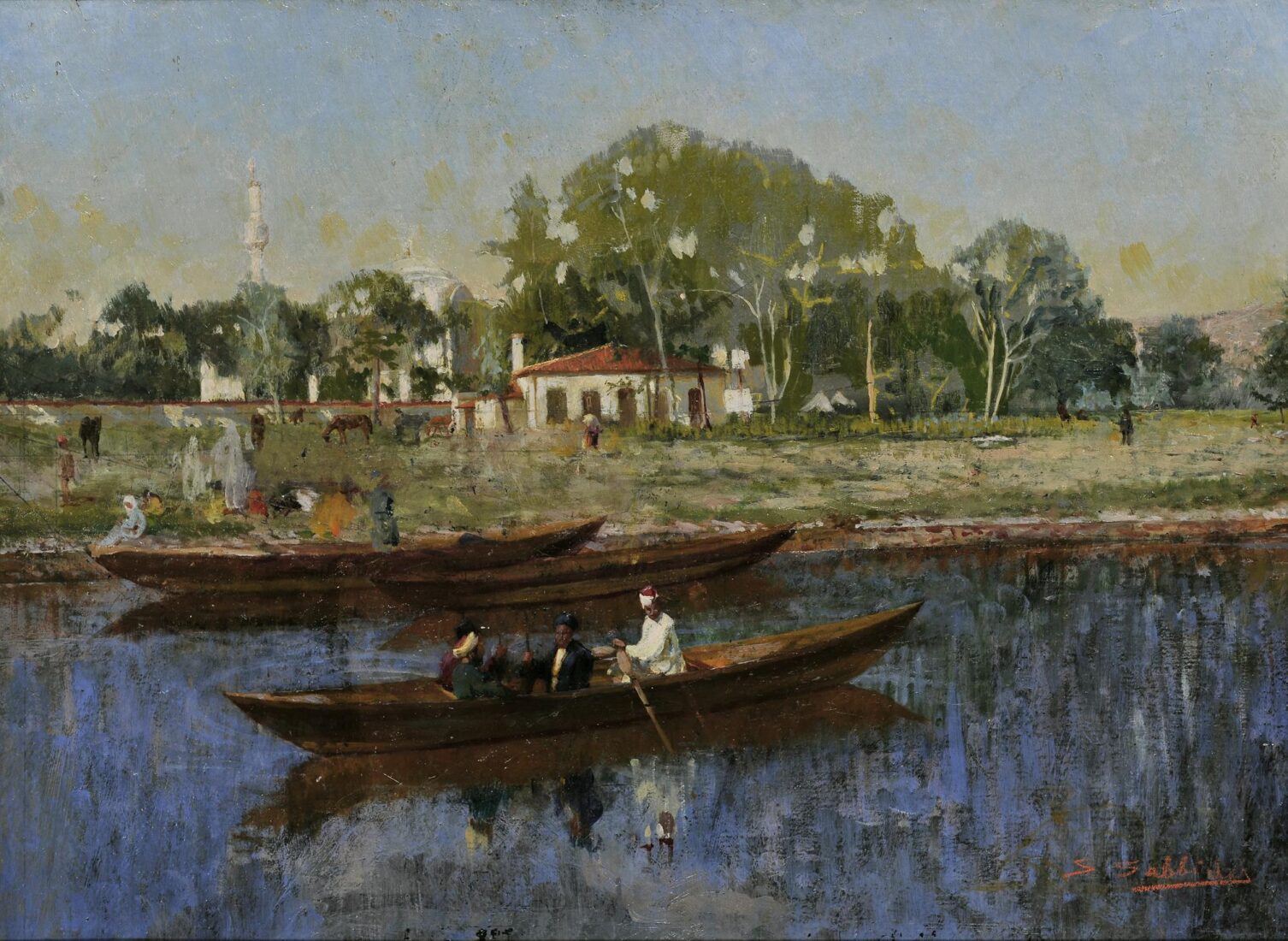
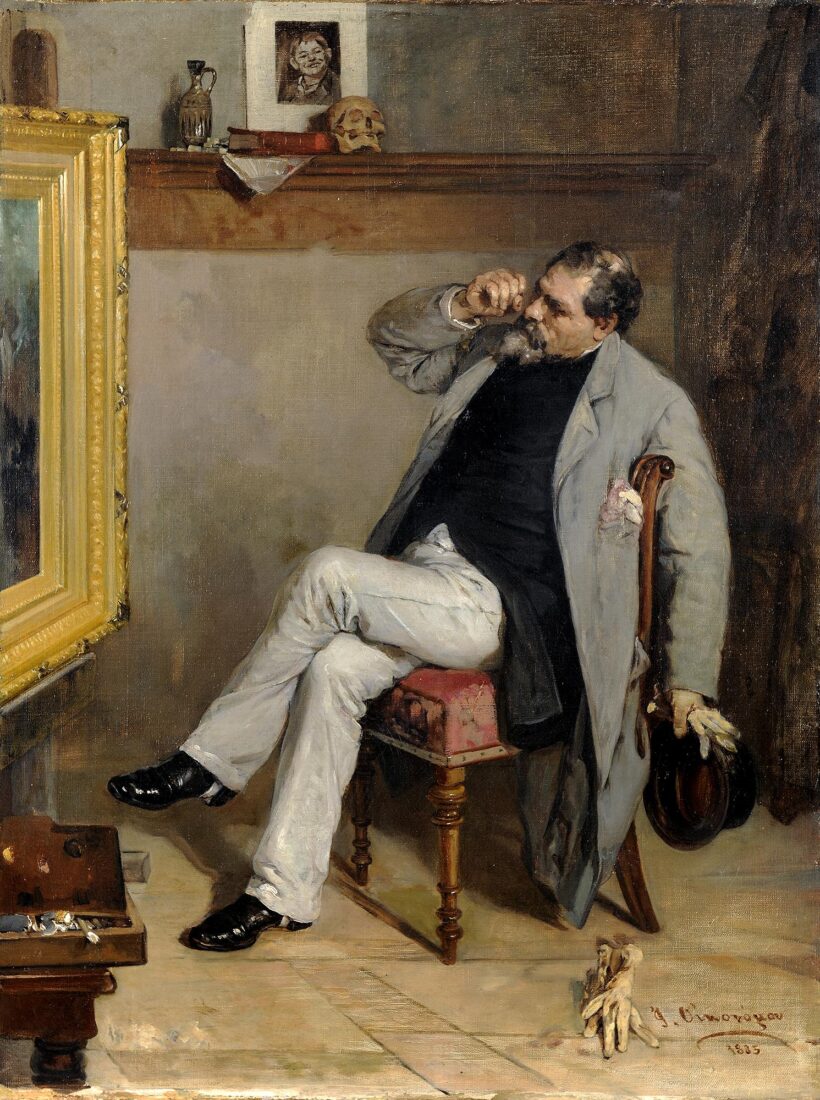
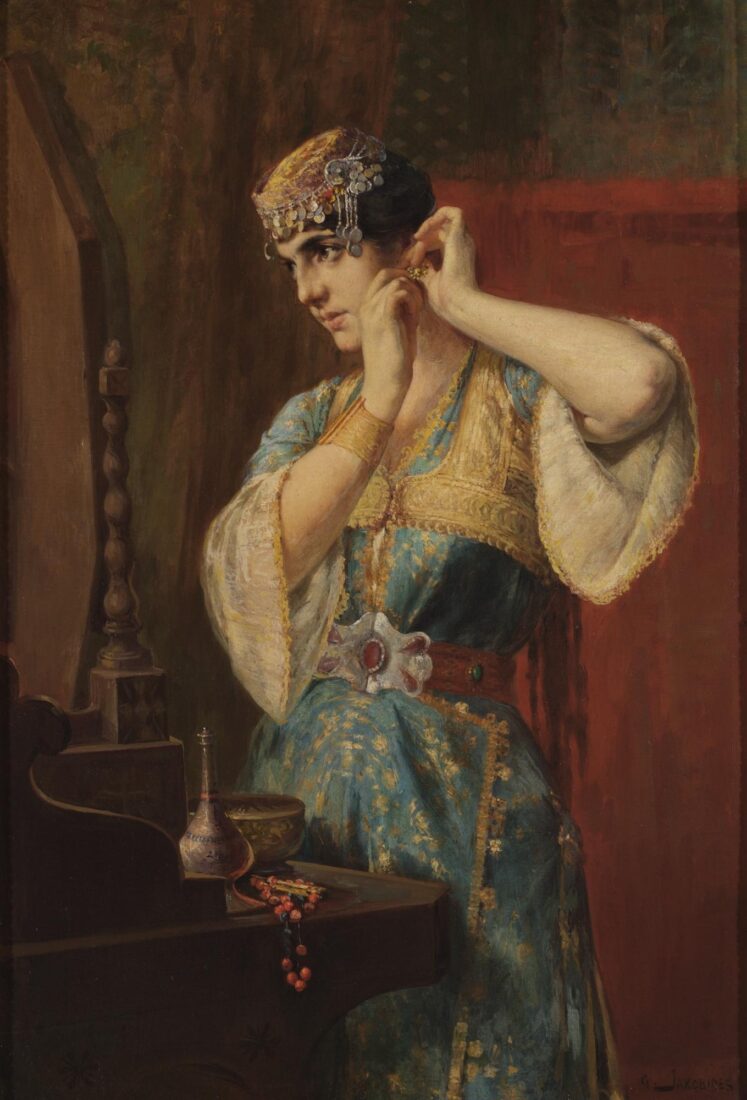
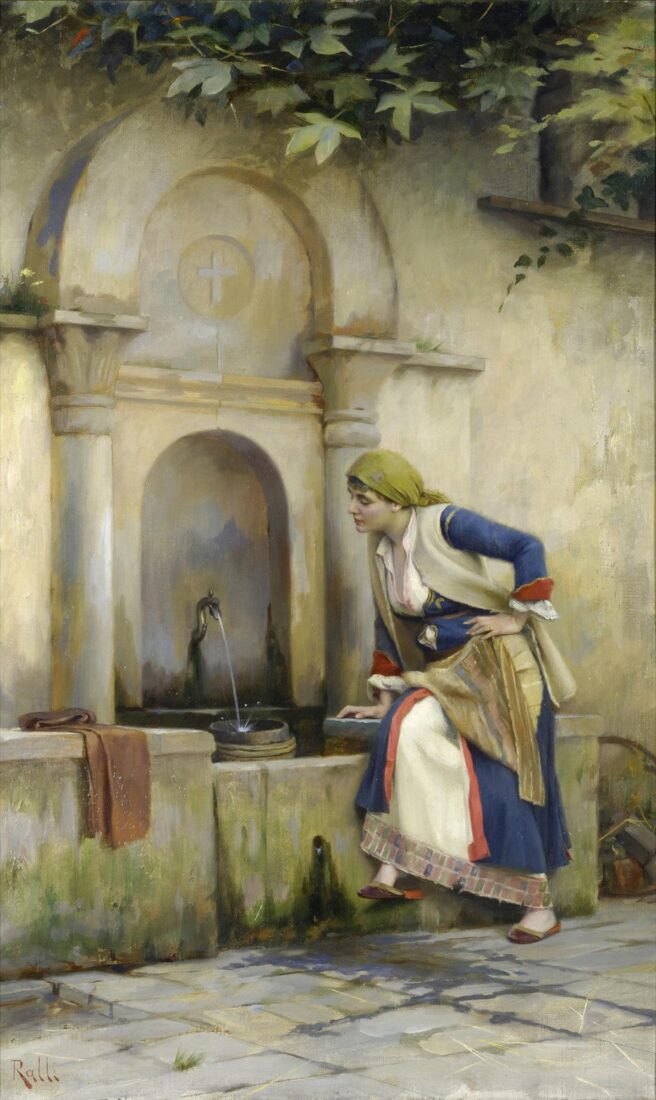
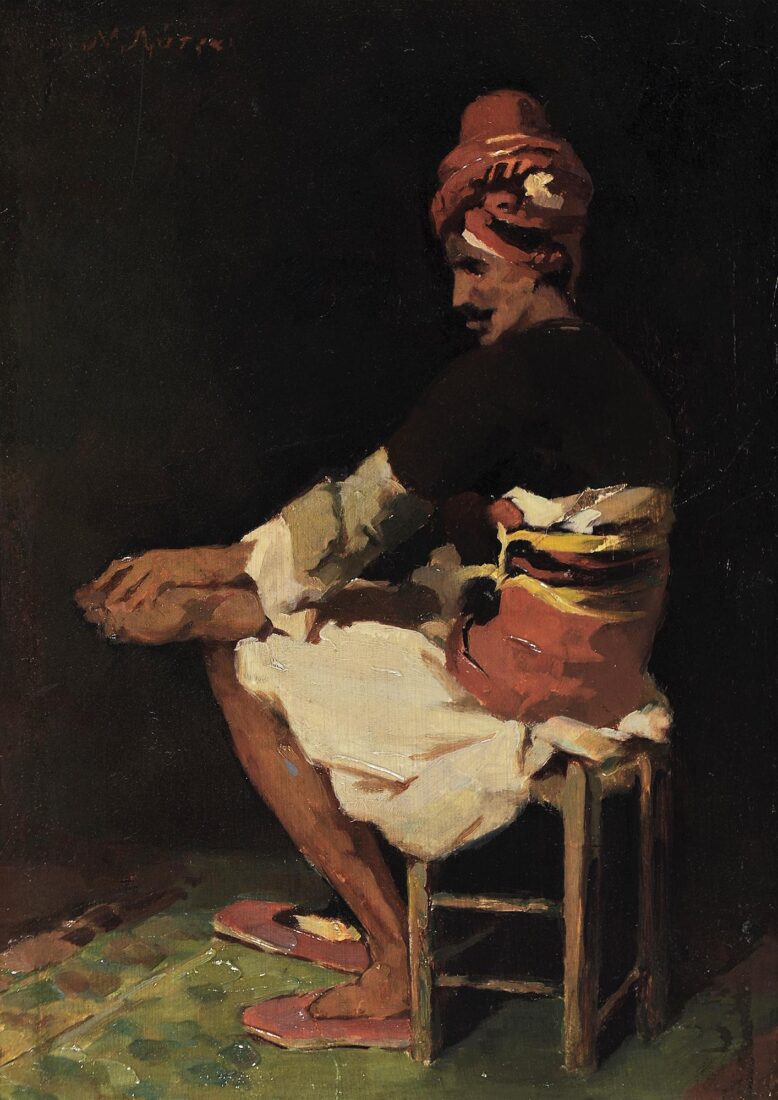
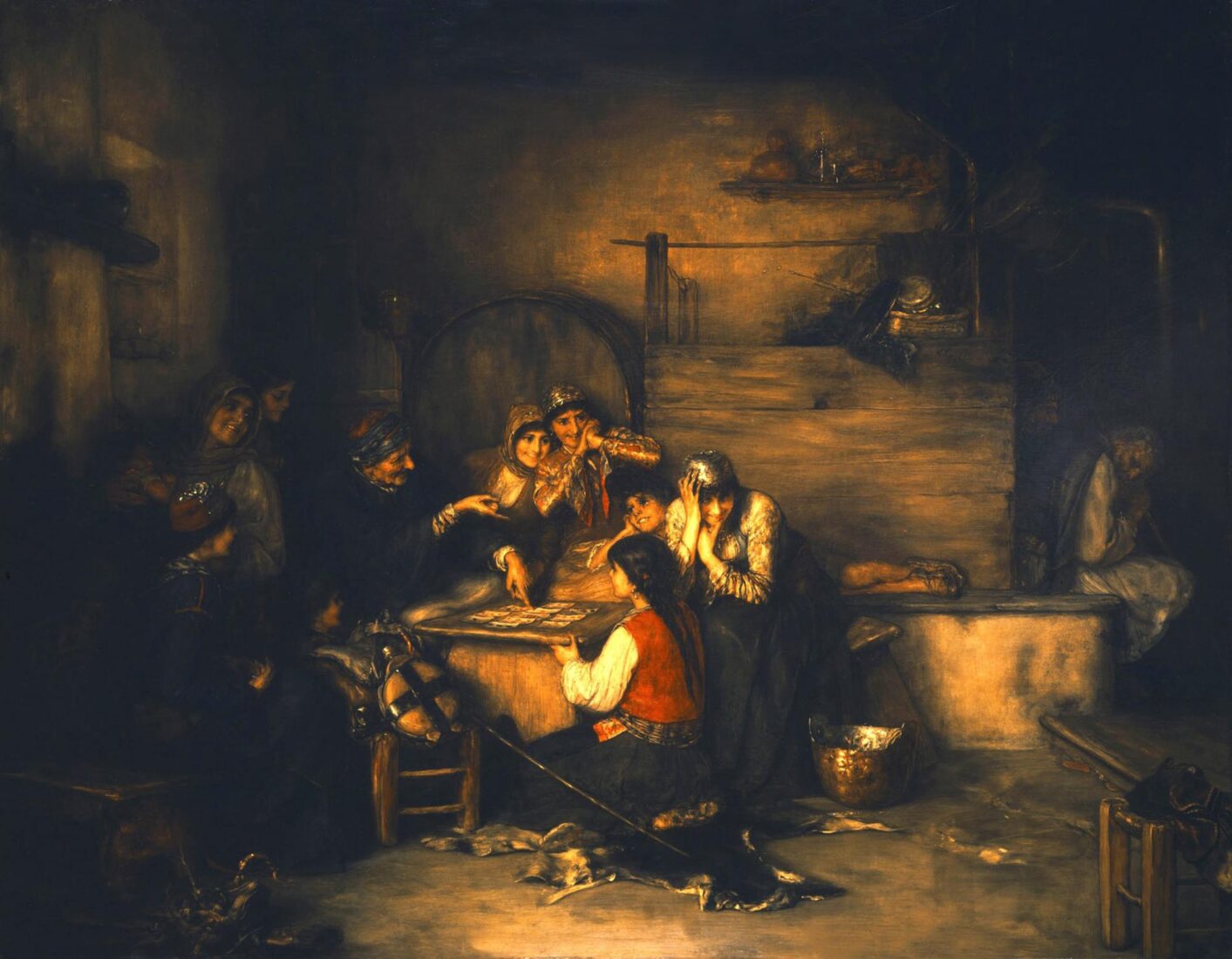
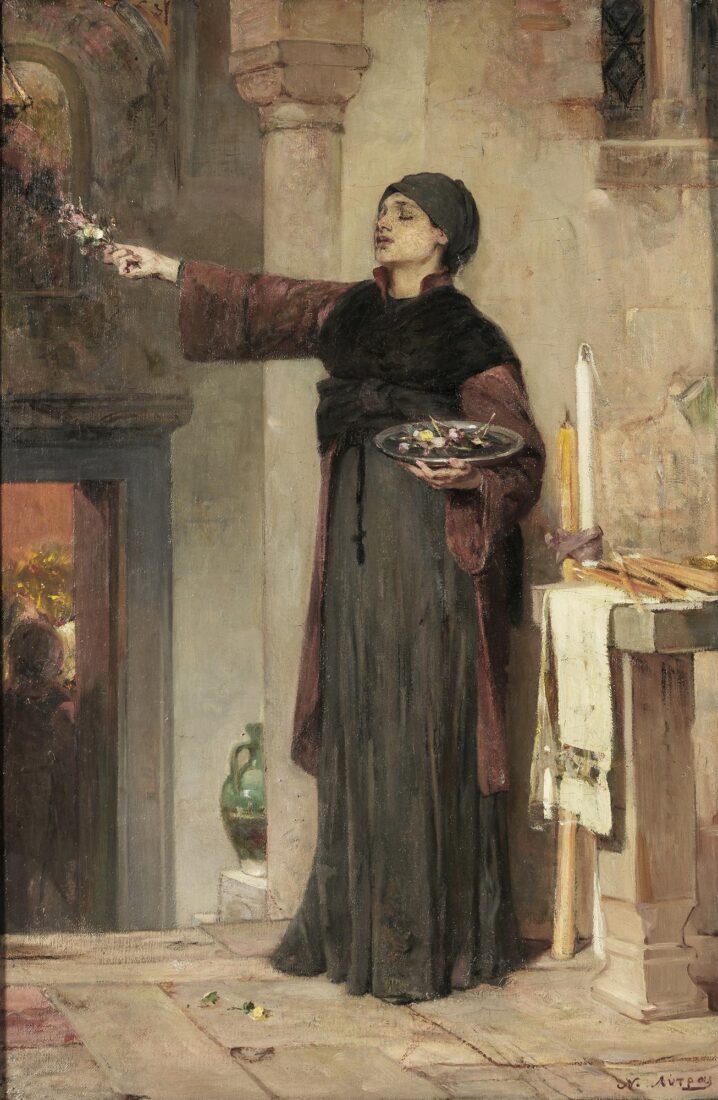
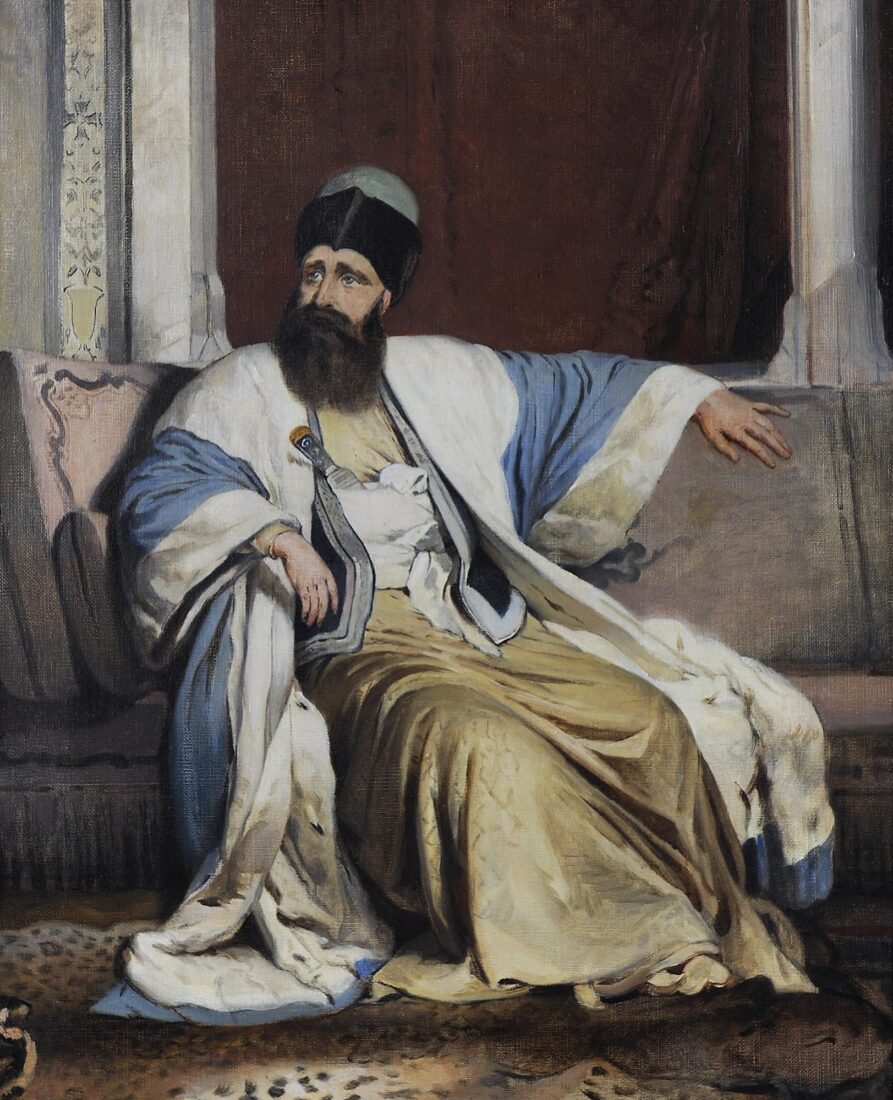
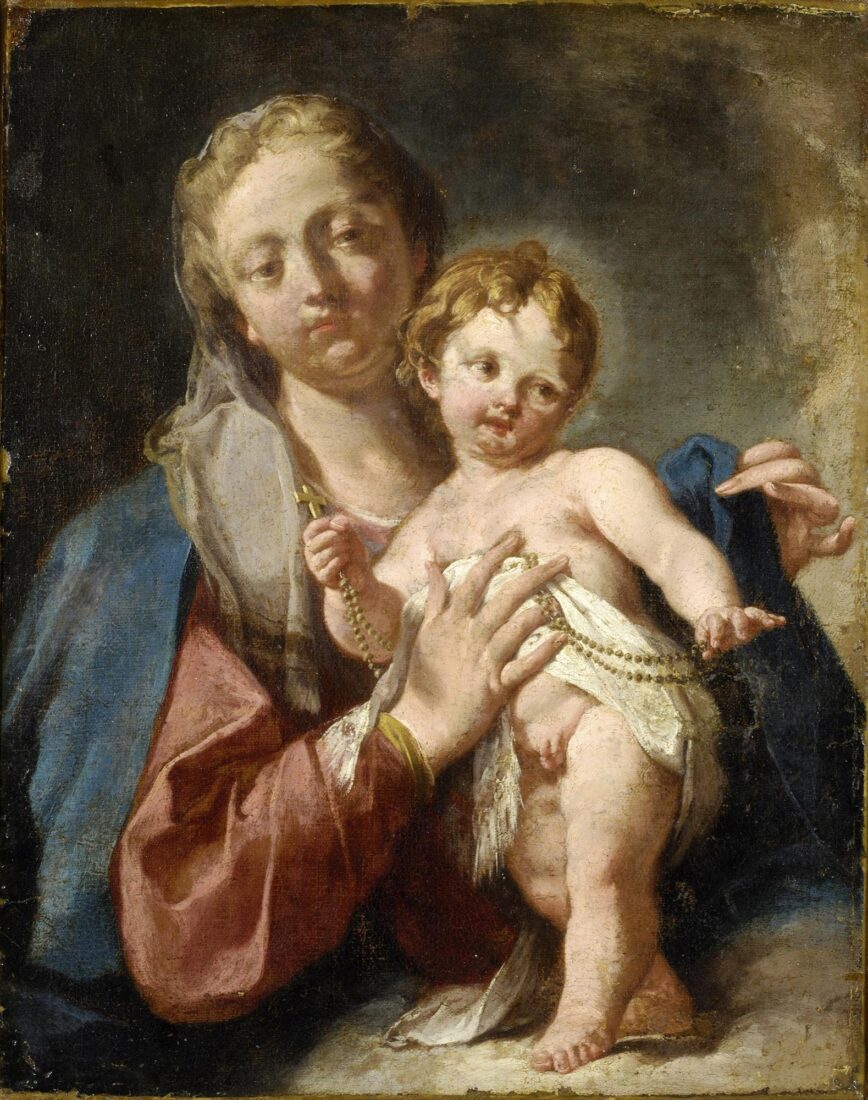
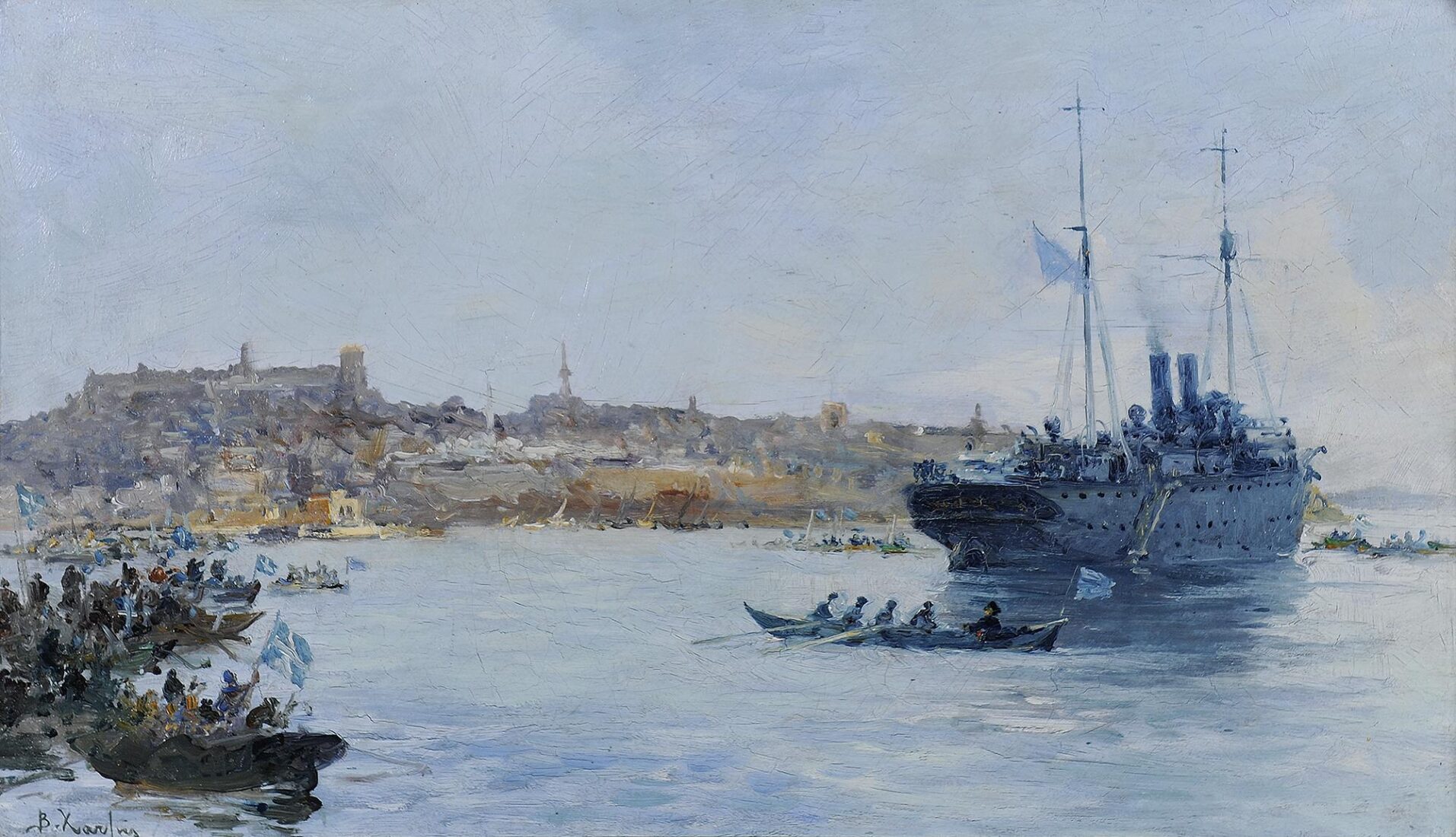
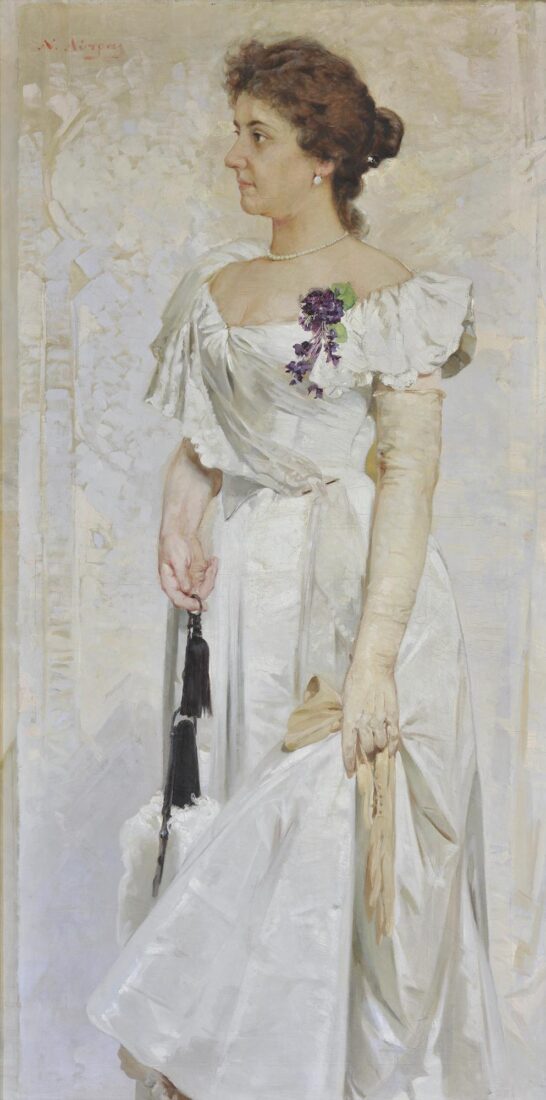
Nikiforos Lytras produced certain imposing, full-body portraits of ladies of the upper-class Athenian society; these works are distinguished by their refined elegance. The lady in the white dress and the long gloves poses against a flat white background, painted in a similar way to her white dress, that is, with brushwork of a subtly changing white, mixed, according to an impressionist principle, with some yellowish ochre in the bright areas, and with a light mauve, lilac, in the dark ones. These two complementary colours make the white colour iridescent and vibrant. The only dark tones in this extraordinarily painted symphony of white are the lady’s brown hair, the lilac bouquet and the black fringes of her umbrella.
